At EHC, we talk about transportation justice often. We know that how we move in our communities has an impact on our quality of life. But how are our communities spreading the word? How are we starting a movement?
Recently, 130 ninth-graders at e3Civic High School turned transportation justice into an outlet of creative expression.
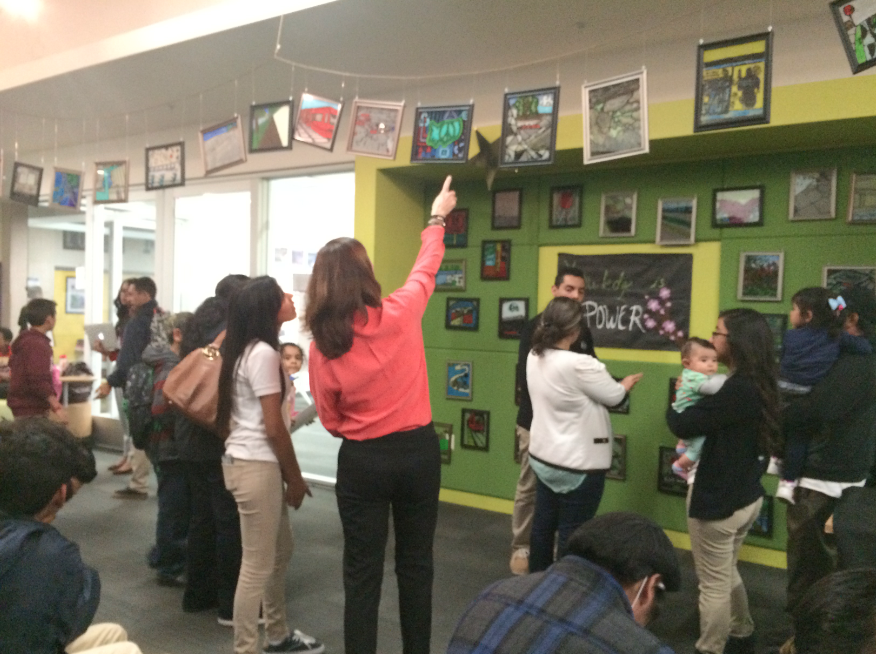
EHC worked closely with the high school’s science, humanities and math teachers to provide students with necessary informational materials and mentorship. The students then took it upon themselves to discover what transportation justice means to them.
From their own research, students developed infographics to help easily explain transportation issues such as public health and infrastructure. Some even explored their home neighborhoods to take photographs of broken or nonexistent sidewalks, automobile congestion, transit opportunities, safe routes and more. These photographs eventually developed into beautiful stained glass images.
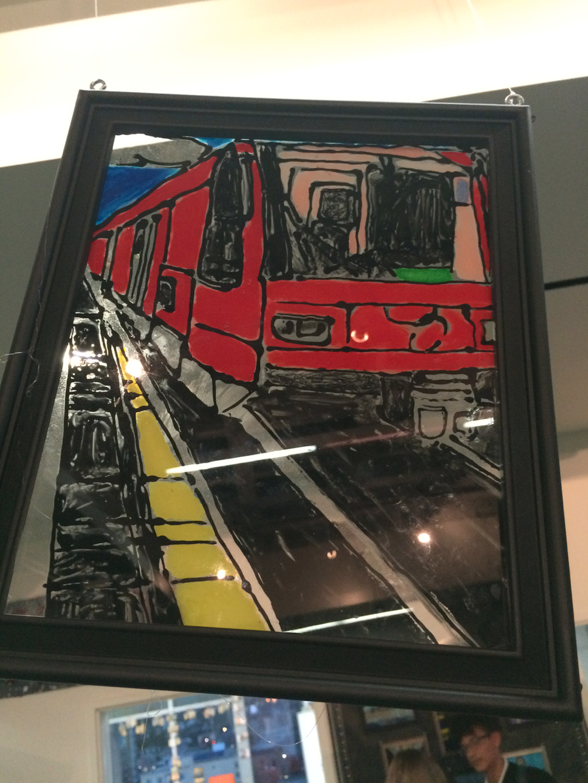
During the school’s “Winter Exhibition of Student Learning,” all 130 students stood alongside their projects and presented them to parents, teachers and community members. As more than 200 adults stopped to take in each piece of art, the students greeted them with information about the current transportation injustices happening in their own backyards.
“When you add lanes to freeways it doesn’t relieve traffic congestion in the long run,” said one student to a classmate’s parent. “It just adds more pollution in the neighborhoods.”
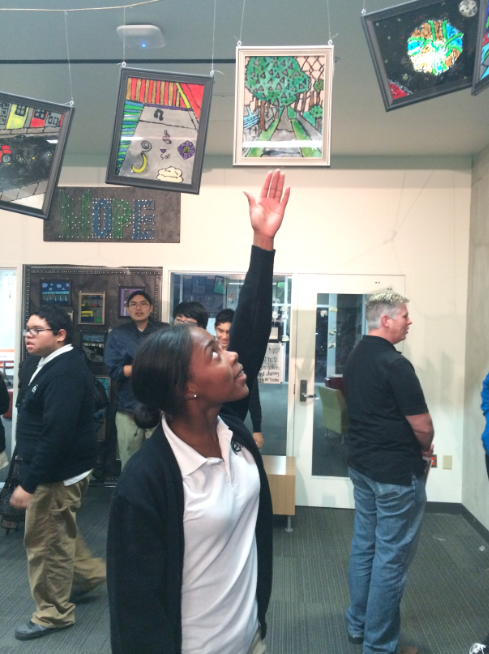
“Some neighborhoods don’t have sidewalks, so they are ten times more likely to get hit by a car than if they lived in a wealthier neighborhood,” explained another student. “This is a transportation justice issue.”
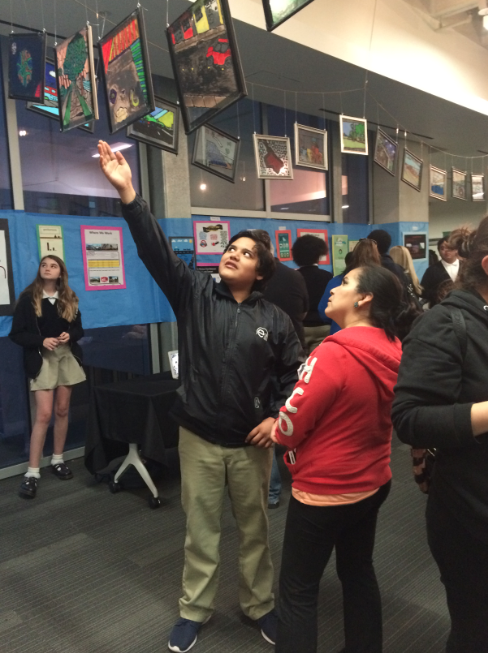
The students also shared their own transportation justice stories. Some could not afford to pay for transit while others felt unsafe crossing streets by their home. One student stood by her stained glass image of a broken sidewalk and told a story of how the poor conditions of the sidewalks and lack of ADA curb cutouts leave her grandmother unable to get around the neighborhood in her wheelchair.
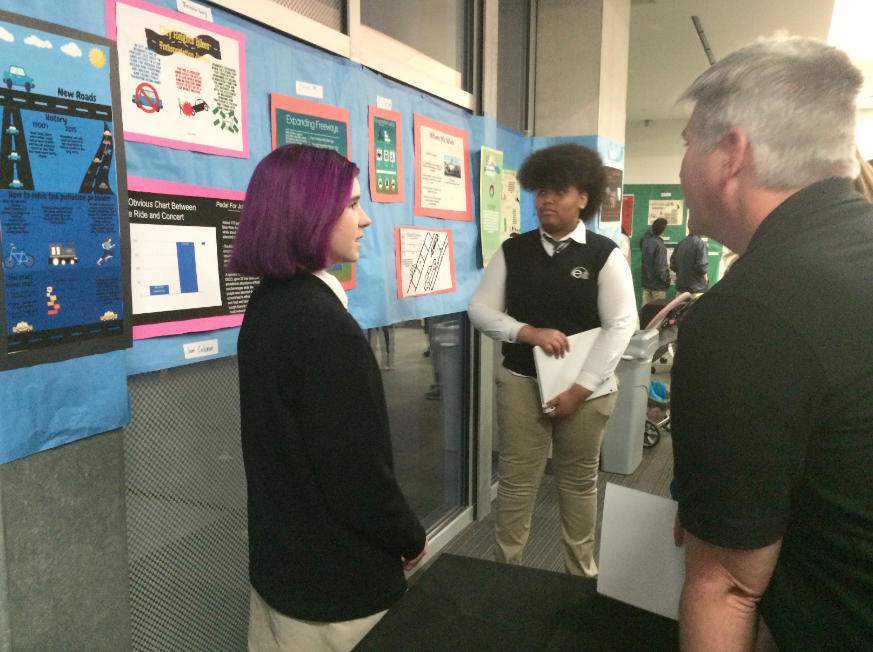
When the students learned that SADAG had a survey requesting input on the type of transportation projects a potential ballot initiative should fund, they saw an opportunity to raise their voice. They placed a computer at the event for attendees to take the survey and urge SANDAG to support public transit, funding for transit passes for youth and say no to freeway expansion.
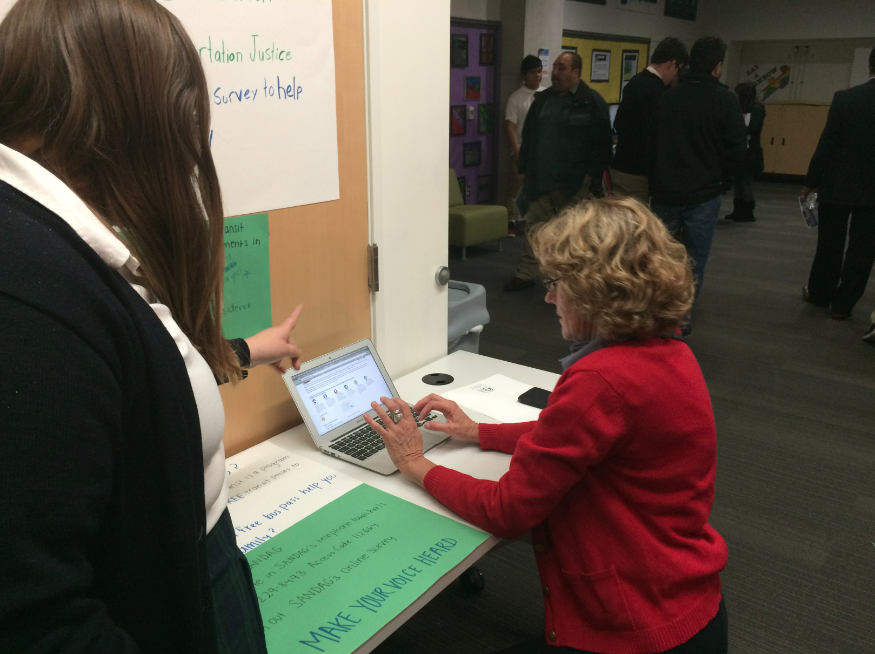
The majority of the students at e3 Civic High School live in San Diego’s urban core and grew up thinking that transportation justice issues were normal aspects of life. Now, these students know that they have the power – and the responsibility - to change the status quo. With knowledge and passion, San Diego now has 130 transportation justice ambassadors equipped to make a difference for years to come.
To learn more about transportation justice, click here. To get involved, please email This email address is being protected from spambots. You need JavaScript enabled to view it. or call (619) 474-0220 ext. 130.

